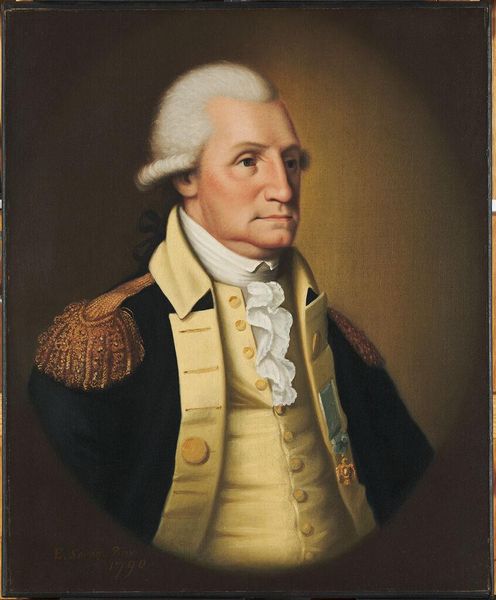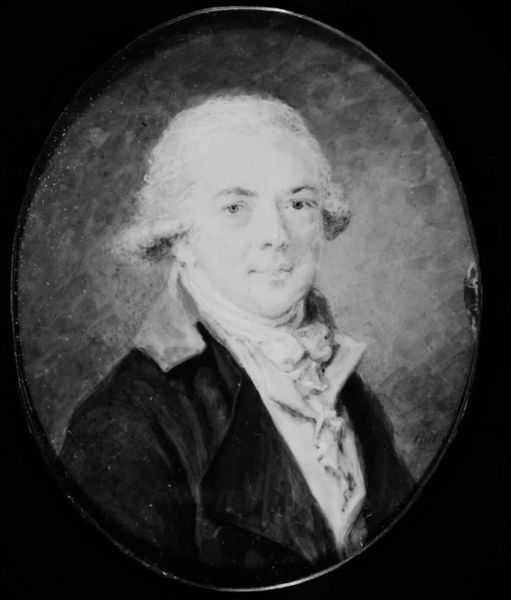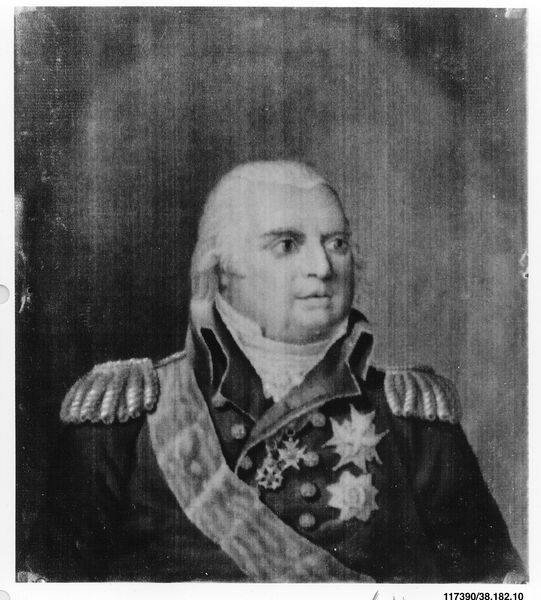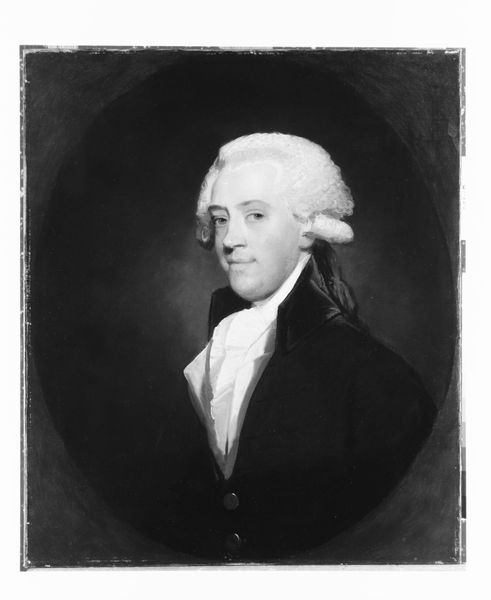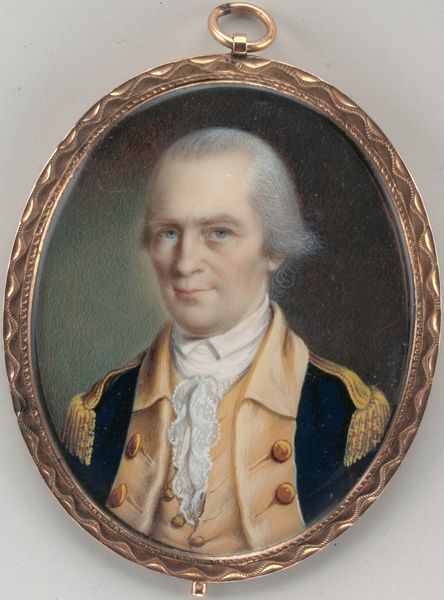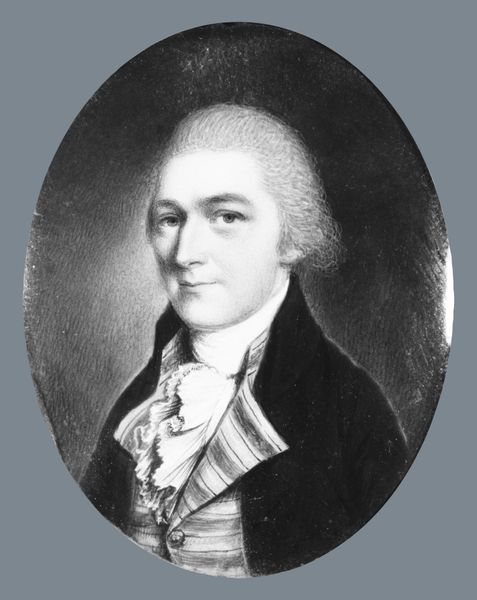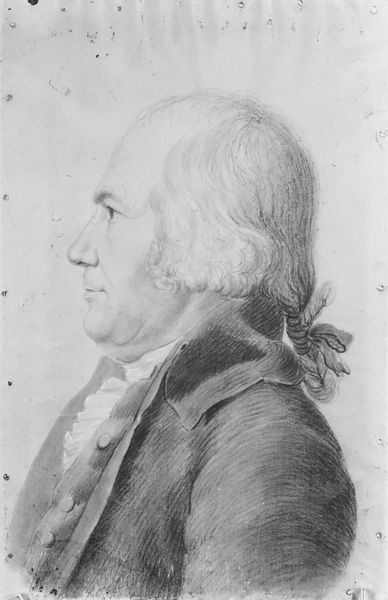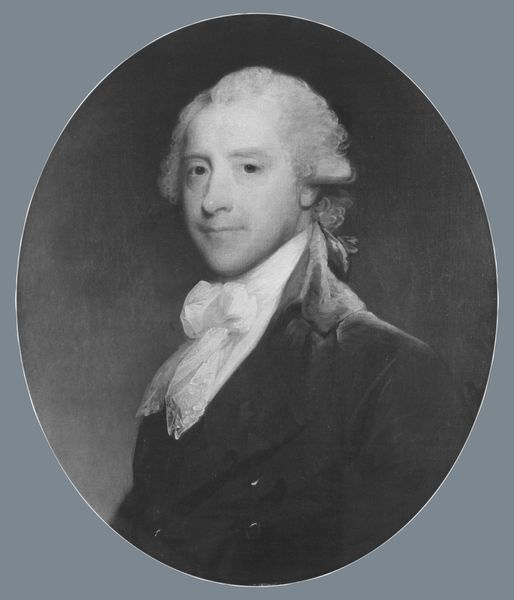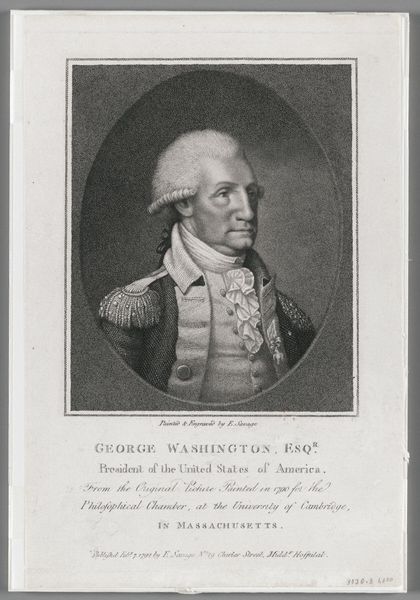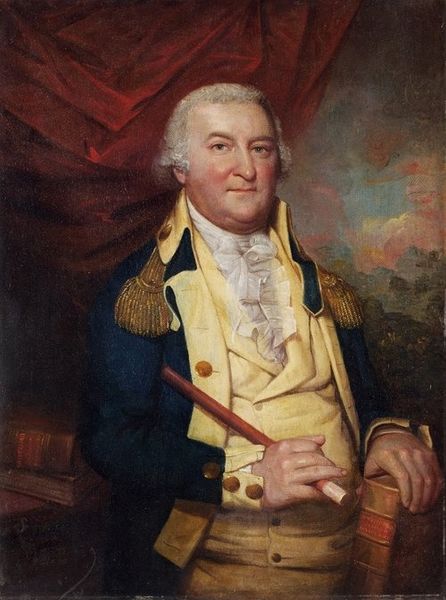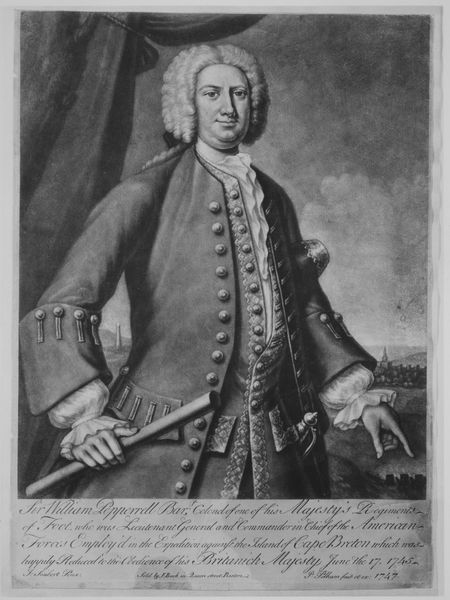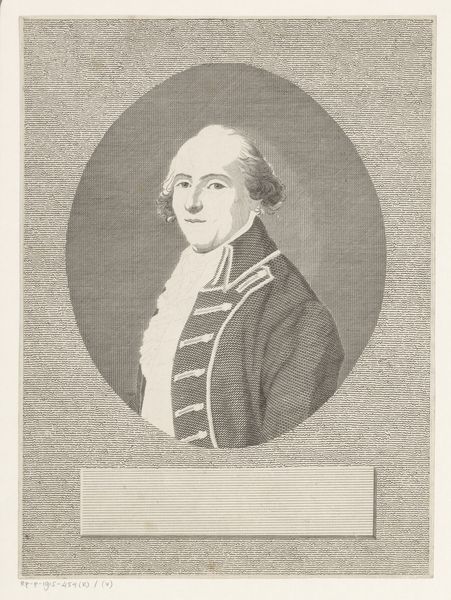
Dimensions: 5 1/2 x 4 1/2 in. (14 x 11.4 cm)
Copyright: Public Domain
Curator: Oh, it's like looking into the soul of a nation's father figure. Kind of stern, but not without a hint of kindness in those eyes. It has that feeling of black and white photography. Editor: Indeed. This is "Panel of George Washington," painted between 1846 and 1883 by William P. Babcock. We can appreciate in it an exemplary demonstration of portraiture steeped in Neoclassical aesthetics. Look at the controlled monochrome palette—an exploration of tonal values used to render form and texture, adhering to academic principles. Curator: Academic, yes, that’s it! Like he's been frozen in a textbook. You can almost hear him reciting something about duty and honor. I do find that restricting oneself to this black and white is powerful and timeless. There's this amazing focus that grabs me by my shirt! Editor: The restricted palette certainly compels focus upon the figure itself. Observe the precise linear qualities defining Washington's features, framed within an oval that further accentuates the subject's gravitas and recalls the traditional form of portrait medallions. The use of this artistic language situates Washington very consciously within a narrative of virtue. Curator: The lighting is great, too. Stark. Almost feels like a spotlight on history. Makes you wonder what Babcock thought of Washington. Adoration? Distance? Is he just copying history? Editor: The chiaroscuro dramatically models his face and the ornate details of his uniform, directing our gaze, inviting a focused reading. The aesthetic echoes both reverence and a considered articulation of power. And I’d wager the neoclassical elements are no accident either. The era, like the man, was about order, civic virtue and tradition, something well documented with art history. Curator: So, overall it hits you right in the… civic duty. It is a bit overwhelming in a way. It speaks volumes in black and white. A lot. Editor: Absolutely, and that concentrated force creates an incredible object of historical, artistic, and political commentary.
Comments
No comments
Be the first to comment and join the conversation on the ultimate creative platform.
